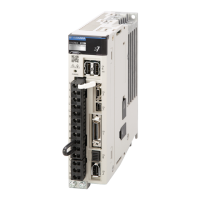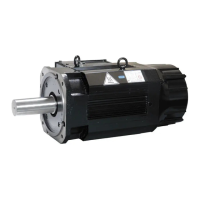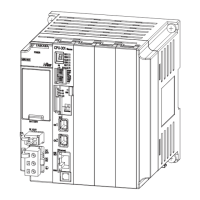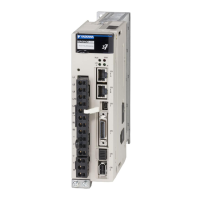5.11 Polarity Detection
5.11.2 Using the /S-ON (Servo ON) Signal to Perform Polarity Detection
5-28
Preparations
Always check the following before you execute polarity detection.
• Not using a polarity sensor must be specified (Pn080 = n.1).
• The servo must be OFF.
• The main circuit power supply must be ON.
• There must be no hard wire base block (HWBB).
• There must be no alarms except for an A.C22 alarm (Phase Information Disagreement).
• The parameters must not be write prohibited. (This item applies only when using the Sig-
maWin+ or Digital Operator.)
• The test without a motor function must be disabled (Pn00C = n.0).
• There must be no overtravel.
• If the motor parameters have been written or the origin of the absolute linear encoder has
been set, the power supply to the SERVOPACK must be turned OFF and ON again after
completion of the writing or setting operation.
5.11.2
Using the /S-ON (Servo ON) Signal to Perform Polarity
Detection
You can use the /S-ON (Servo ON) signal to perform polarity detection only with an incremental
linear encoder.
Polarity detection will be performed when you turn the control power supply to the SERVO-
PACK OFF and then ON again, and then input the /S-ON signal. As soon as polarity detection
is completed, the /S-RDY (Servo Ready) signal will turn ON.
1. Power is supplied to the Servomotor during polarity detection. Be careful not to get an electric
shock. Also, the Moving Coil of the Linear Servomotor may greatly move during detection. Do
not approach the moving parts of the Servomotor.
2. Polarity detection is affected by many factors.
For example, polarity detection may fail if the mass ratio or friction is too large or the cable ten-
sion is too strong.
Important
Typ e Signal Connector Pin No.
Signal
Status
Meaning
Input /S-ON
CN1-40
(default setting)
ON
(closed)
The servo is turned ON (power is supplied to the
motor), polarity detection is performed once, and
then the servo is left ON. (The /S-RDY signal will turn
ON.)
OFF
(open)
The servo is turned OFF (power is not supplied to the
motor) and operation is disabled.
/S-ON (Servo ON) signal
/S-RDY (Servo Ready) signal
Motor power status
Power not supplied.
Power supplied.
Polarity detection in progress
Status display: P-dt
Completion of polarity detection
Normal operation is enabled.
ON
OFF
ONOFF
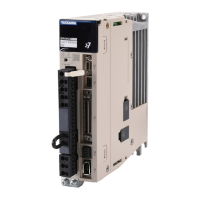
